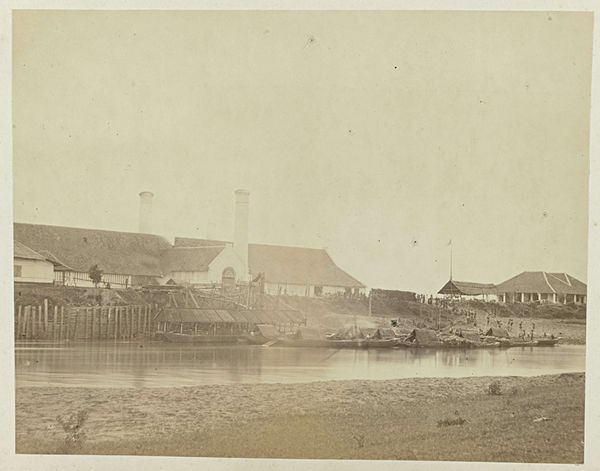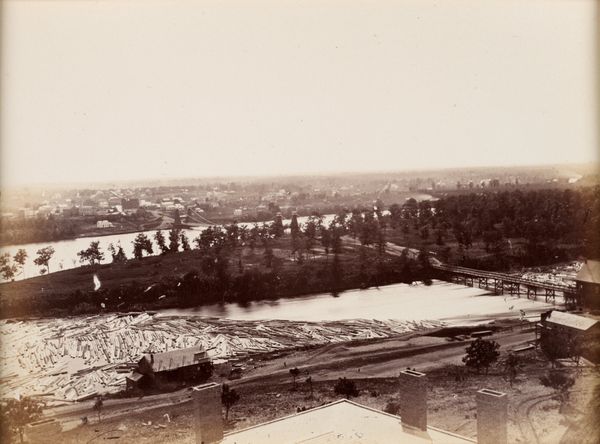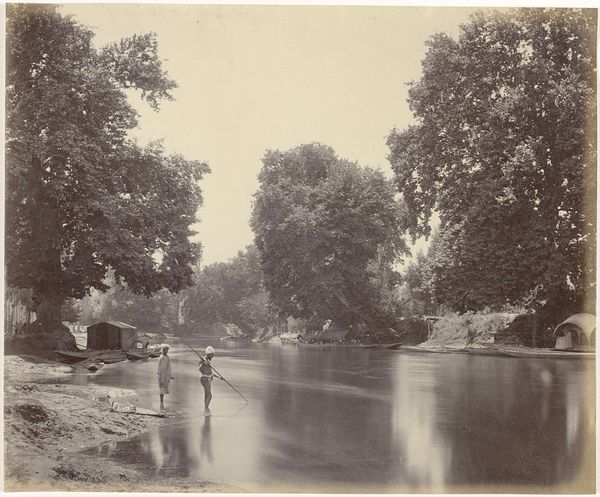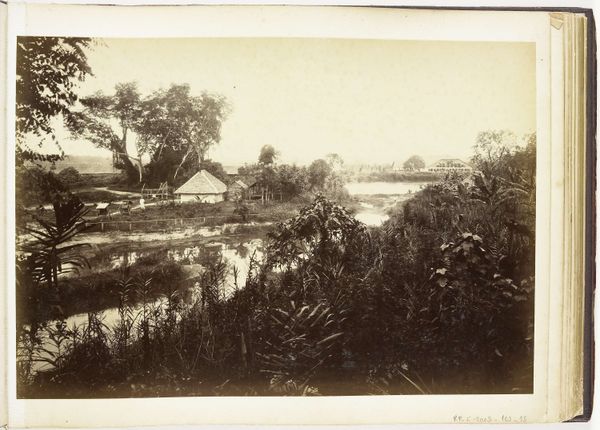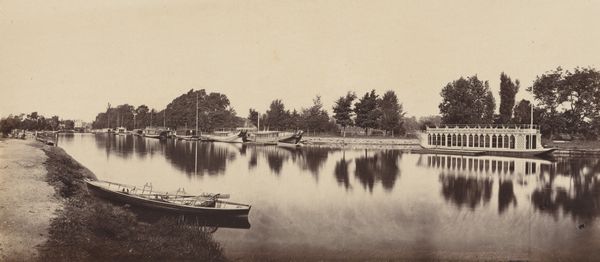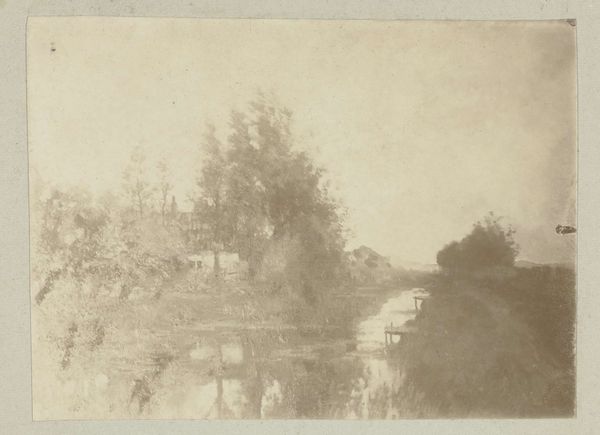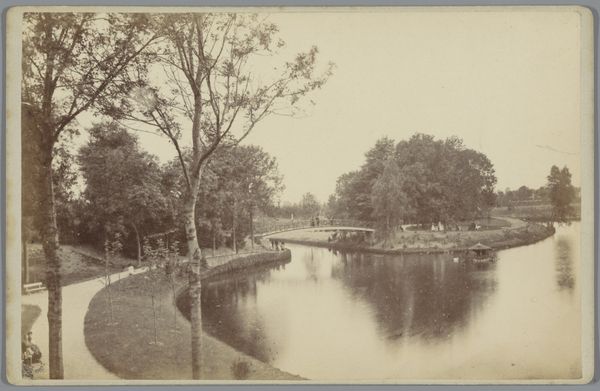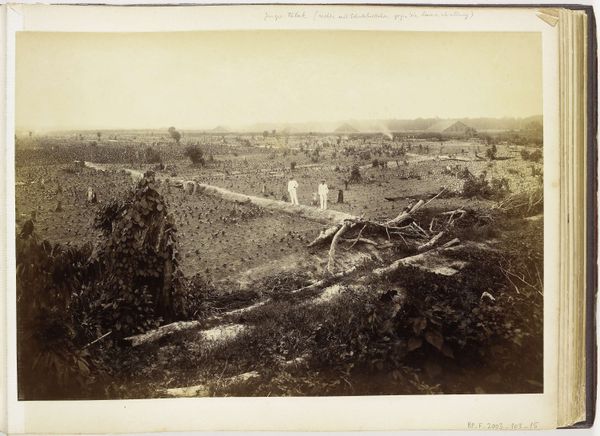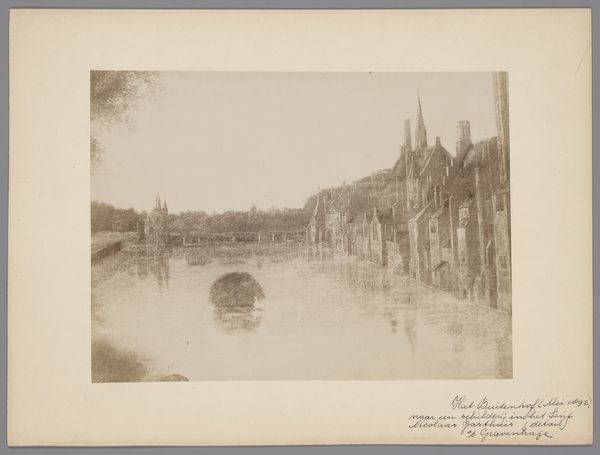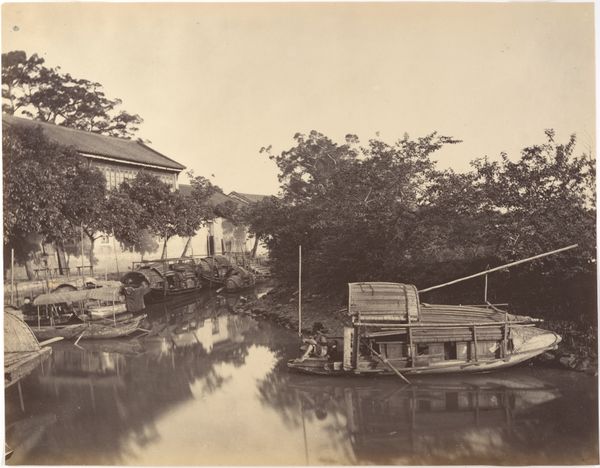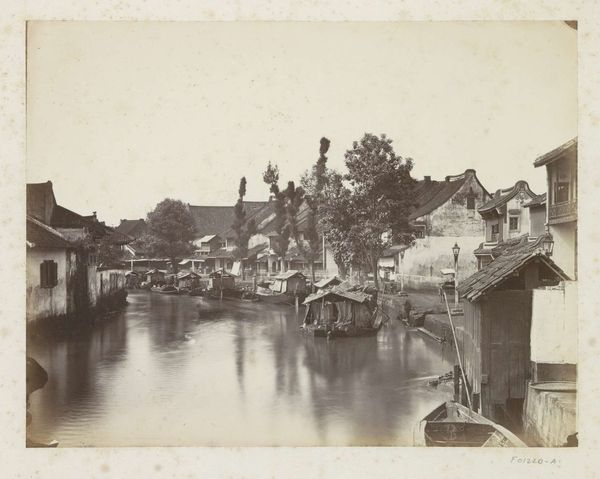![[Tolly's Nullah, Calcutta] by Captain R. B. Hill](/_next/image?url=https%3A%2F%2Fd2w8kbdekdi1gv.cloudfront.net%2FeyJidWNrZXQiOiAiYXJ0ZXJhLWltYWdlcy1idWNrZXQiLCAia2V5IjogImFydHdvcmtzLzc1YmNmYzk4LWZmZjEtNGMxYi04ZGE1LTJhZGYxOGVlOThhZC83NWJjZmM5OC1mZmYxLTRjMWItOGRhNS0yYWRmMThlZTk4YWRfZnVsbC5qcGciLCAiZWRpdHMiOiB7InJlc2l6ZSI6IHsid2lkdGgiOiAxOTIwLCAiaGVpZ2h0IjogMTkyMCwgImZpdCI6ICJpbnNpZGUifX19&w=3840&q=75)
photography, albumen-print, architecture
#
landscape
#
photography
#
orientalism
#
albumen-print
#
architecture
Dimensions: Image: 18.3 x 24 cm (7 3/16 x 9 7/16 in.) Mount: 21 x 28.2 cm (8 1/4 x 11 1/8 in.)
Copyright: Public Domain
Curator: Upon viewing this albumen print, the tranquil scene captured is immediately striking. The sepia tones lend an antique sensibility that I believe speaks directly to the photograph's age. Editor: Yes, the almost dreamlike quality of the monochromatic palette, as rendered by Captain R. B. Hill, presents an idyllic landscape—but it also hints at a more complex relationship with the colonial gaze and the picturesque rendering of Bengal. Curator: Absolutely. Captain Hill’s “[Tolly’s Nullah, Calcutta]”, created sometime in the 1850s, is an exquisite example of photography as documentation and a form of Orientalist aesthetic. It currently resides here at the Metropolitan Museum of Art. The detail in the thatched roofs, reflected beautifully in the Nullah, shows his technical skill. Editor: I’m particularly drawn to the juxtaposition of what appears to be simple vernacular architecture—thatched huts clustered on the riverbank—alongside what appears in the background to be a more modern structure, possibly some infrastructural piece of colonial engineering in the form of that raised, western style bridge we can see in the distance. Curator: A shrewd observation. The strategic composition places indigenous dwellings in the foreground while alluding to British construction behind, certainly pointing toward colonial dominance during this period. Hill's work subtly reinforces power dynamics by visually framing Indian life as subordinate. Editor: Precisely. There is a politics to this supposed "tranquility," as you called it. By creating distance and framing everyday life, Captain Hill also creates an understanding for the viewing public about an asymmetrical power relation, thus, othering the colonial subjects. What does this “landscape” enable for the Western consumption of another country’s people and labor? Curator: A fascinating question to consider. Though ostensibly a simple landscape shot, this image prompts important considerations about the historical narratives we inherit, about who has the power to depict whom, and what ideological projects such depictions ultimately support. Editor: I think situating art in socio-political conversations brings renewed awareness to the museum visit. "Tolly's Nullah, Calcutta" invites conversations that I would argue shape not only art historical studies, but broader public discourse.
Comments
No comments
Be the first to comment and join the conversation on the ultimate creative platform.
